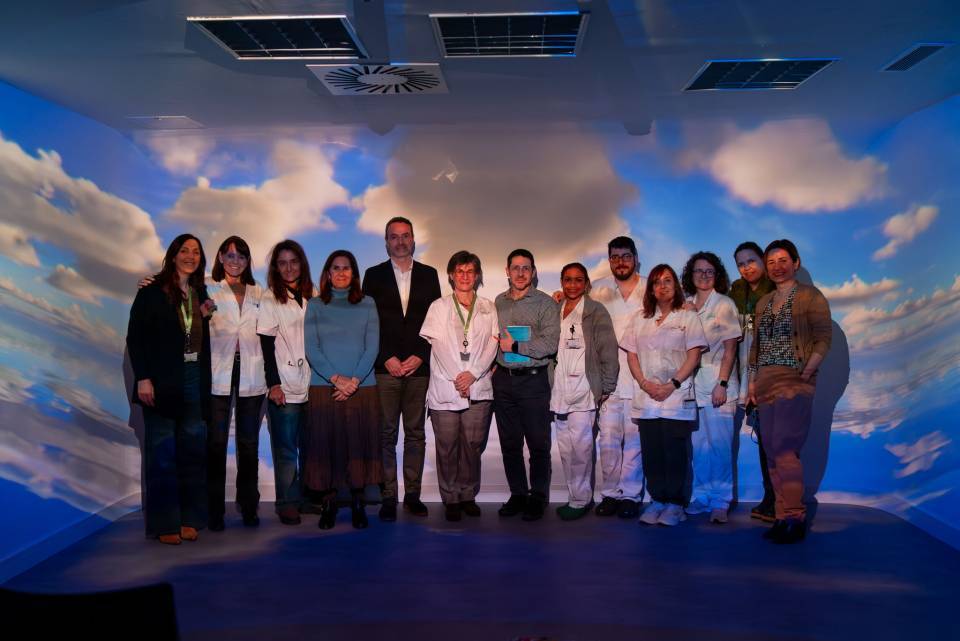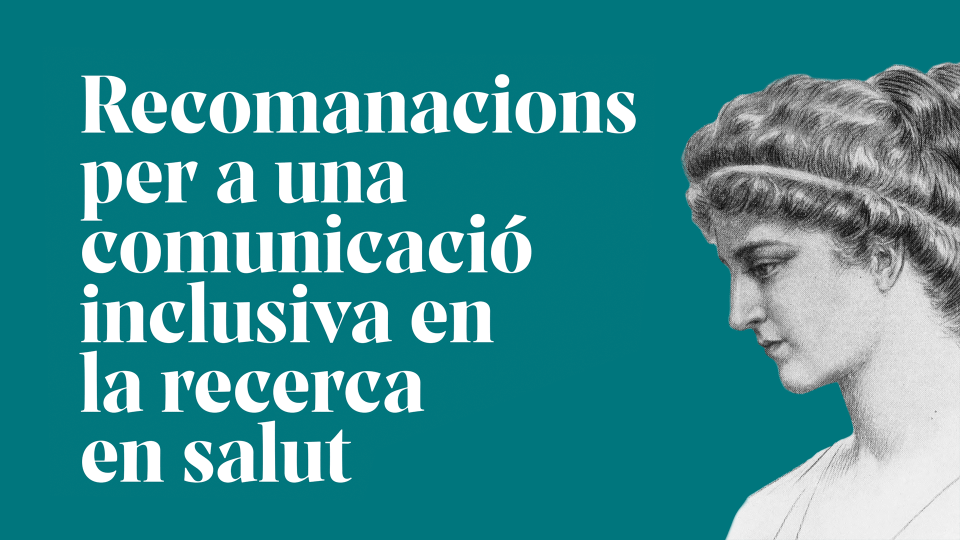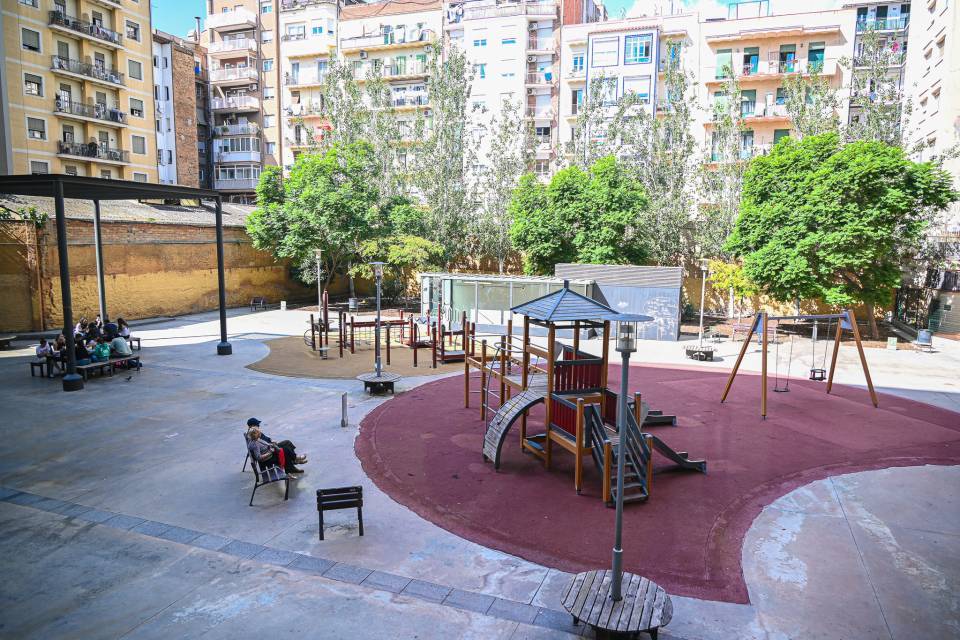The Hospital Clínic Barcelona has opened two new virtual reality immersive rooms designed to improve mental health care for children and adults admitted to the centre for acute care. Moreover, with this inauguration, a study is being launched to evaluate the impact of this new technology as a resource for de-escalating agitation crises and as a therapeutic tool in a group setting. This project has been possible thanks to the support of Reale Foundation, the corporate foundation of Reale Seguros, through an agreement with the hospital's Corporate Social Responsibility Area.
The opening ceremony was attended by Dr Josefina Castro, director of the Clínic Neurosciences Institute (ICN) and coordinator of the IDIBAPS Child and Adolescent Psychiatry and Psychology research group and Dr Luisa Lázaro, head of the Child and Adolescent Psychiatry and Psychology Service at the Hospital Clínic and IDIBAPS researcher. It was also attended by Dr Astrid Morer, head of the psychiatric hospitalization section, project coordinator and researcher in the Clínic-IDIBAPS Child and Adolescent Psychiatry and Psychology research group, and Ms Cindy Frias, nursing coordinator in the same service as a representative of this group. In addition, as part of the Corporate Social Responsibility Area, Ms Anna Jover, as head of that area and, on behalf of Reale Seguros, Ms Pilar Suárez-Inclán, director of institutional relations, and Mr Jordi Rosich, regional director for Catalonia and Balearic Islands, also attended.
During the opening ceremony, Dr Lázaro highlighted the importance of these spaces: “These rooms represent significant progress in the humanization of therapeutic environments, offering non-restrictive alternatives in the management of episodes of agitation and in the recovery from them”. The rooms are designed to address these key areas in the treatment of patients with acute psychopathology. The first is designed for individual relaxation and the de-escalation of the episode, whilst the second focuses on group therapies and programmed activities for the management of anxiety and emotional dysregulation.
Both rooms have been equipped with an advanced sensory design with cutting-edge immersive technology, offering an experience that integrates visual and auditory projections designed and developed for therapy. In this regard, Dr Castro underlined the project’s innovative potential: “Immersive technology allows us to explore new ways of improving patients’ emotional well-being and self-regulation”.
The patients who will benefit from this resource are children and adolescents in the Inpatient Ward. In this 20-bed unit, patients with various disorders such as autism spectrum disorders, eating disorders, depressive disorders, and psychotic disorders are treated.
“One of the objectives of our foundation is to guarantee a healthy life and promote well-being for all ages, and we are aware that mental health problems are currently occurring at younger ages. We are very grateful to be able to do our bit by supporting a project that focuses on the patient and their well-being, combining the therapeutic aspect with the use of technology to humanize the environments in which these treatments are carried out”, said Pilar Suárez-Inclán, director of institutional relations at Reale Seguros.
Immersive virtual reality, a possible therapeutic tool
The implementation of the immersive rooms at the Clínic Barcelona responds to the growing need to develop more respectful and effective therapeutic strategies in the treatment of patients with acute psychopathology. In child and adolescent psychiatry units, the management of episodes of agitation can include restrictive measures such as physical restraints and isolation. Although these resources are used as a last resort, they entail physical and emotional risks for both patients and the healthcare staff.
In line with international recommendations on the reduction of these practices, the Clínic is committed to innovative sensory approaches as an alternative for promoting self-regulation and emotional recovery.
In this respect, the new immersive rooms will be the subject of a study to evaluate, on the one hand, whether their use helps reduce the number of restraints and isolation and, on the other, the impact of the sessions carried out in the immersive room on reducing anxiety and improving emotional well-being during admission will be explored.
Both studies will use a combination of quantitative and qualitative methodologies to provide a comprehensive assessment. The expected results will not only seek to validate the effectiveness of these sensory approaches, but also to generate evidence that will allow their implementation to be replicated in other centres. “These results will help optimize the design and implementation of sensory strategies in the field of psychiatry”, said Dr Astrid Morer.
Thus, these immersive rooms not only offer a more humane environment adapted to the needs of patients, they also represent a step forward towards safer, more ethical and user-friendly mental health care”, concluded Ms Frias.




